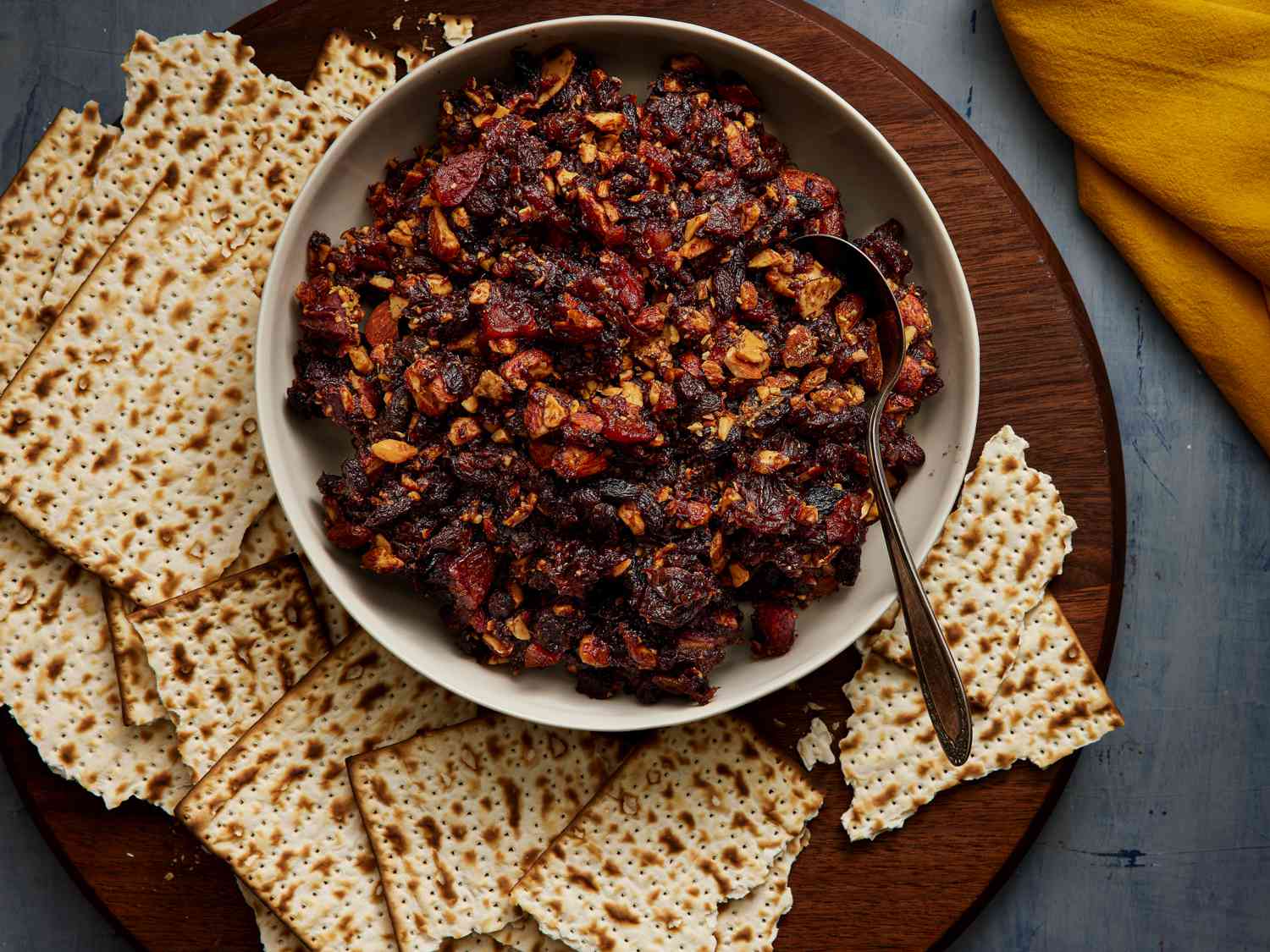
Charoset is a traditional Jewish dish enjoyed during Passover. This sweet, chunky mixture symbolizes the mortar used by Hebrew slaves in Egypt. But what exactly goes into this symbolic food? Charoset typically includes ingredients like apples, nuts, wine, and spices, but recipes vary widely across different Jewish communities. Some versions use dates, figs, or even bananas. The texture can range from smooth to chunky, depending on personal preference. Charoset not only adds flavor to the Seder plate but also carries deep cultural and historical significance. Curious about the different types and their unique ingredients? Let's explore 27 fascinating facts about Charoset that will deepen your appreciation for this beloved dish.
What is Charoset?
Charoset is a traditional Jewish dish enjoyed during Passover. It's a sweet, chunky mixture symbolizing the mortar used by Hebrew slaves in Egypt. This dish holds deep cultural and religious significance.
-
Charoset is a staple of the Passover Seder plate, representing the mortar used by Hebrew slaves in Egypt.
-
The word "Charoset" comes from the Hebrew word "cheres," meaning clay.
-
Ingredients often include apples, nuts, wine, and spices, though recipes vary widely.
Ingredients and Variations
Charoset recipes differ by region and family tradition. Each variation offers a unique taste and texture, reflecting the diverse Jewish diaspora.
-
Ashkenazi Jews typically use apples, walnuts, cinnamon, and sweet red wine.
-
Sephardic Jews might include dates, figs, raisins, and a variety of nuts.
-
Some Middle Eastern recipes incorporate pomegranate seeds and silan (date syrup).
-
Italian Jews often add chestnuts and pine nuts to their Charoset.
Symbolism and Meaning
Charoset isn't just a tasty treat; it carries deep symbolic meaning, reminding Jews of their ancestors' hardships and resilience.
-
The sweetness of Charoset symbolizes the hope and sweetness of freedom.
-
The texture, often chunky, represents the mortar used by Hebrew slaves.
-
Wine in Charoset symbolizes the blood of the Passover sacrifice.
Historical Origins
Charoset's origins date back thousands of years, with its first mention in Jewish texts providing insight into its historical significance.
-
The first mention of Charoset is in the Mishnah, a Jewish legal text from around 200 CE.
-
Some scholars believe Charoset may have originated from ancient Roman culinary traditions.
-
The use of fruits and nuts in Charoset reflects the agricultural practices of ancient Israel.
Modern Uses and Adaptations
While traditionally a Passover dish, Charoset has found its way into modern cuisine, with chefs and home cooks alike experimenting with new uses and adaptations.
-
Charoset can be used as a spread on matzah or bread.
-
Some people use Charoset as a filling for pastries or desserts.
-
It can also be mixed into yogurt or oatmeal for a sweet, nutritious breakfast.
Health Benefits
Charoset isn't just delicious; it's also packed with nutrients, making it a healthy addition to any diet.
-
Apples in Charoset provide fiber and vitamin C.
-
Nuts offer healthy fats, protein, and various vitamins and minerals.
-
Spices like cinnamon have anti-inflammatory properties.
-
Wine, when used in moderation, contains antioxidants beneficial for heart health.
Fun Facts
Charoset has some interesting quirks and fun facts that make it even more fascinating.
-
Some families have secret Charoset recipes passed down through generations.
-
In some Jewish communities, Charoset is made in large batches and shared among neighbors.
-
Charoset is one of the few Passover foods that children often enjoy due to its sweetness.
-
The consistency of Charoset can vary from a thick paste to a more liquidy mixture, depending on personal preference.
-
Some people add a splash of orange juice or zest for a citrusy twist.
-
Charoset can be made ahead of time and stored in the refrigerator for several days.
-
Despite its ancient origins, Charoset continues to evolve, with new recipes and variations emerging each year.
The Sweet Essence of Charoset
Charoset isn't just a tasty treat; it's a symbol of history, culture, and tradition. This simple mixture of fruits, nuts, and spices carries deep meaning for those who celebrate Passover. Each ingredient tells a story, connecting generations through shared memories and flavors. Whether you prefer the classic apple and walnut combo or a more exotic blend with dates and figs, charoset brings people together. It's a reminder of resilience and hope, wrapped up in a delicious bite. So next time you enjoy charoset, remember its rich heritage and the stories it holds. Share it with friends and family, and keep the tradition alive. This sweet, sticky mixture is more than just a food—it's a piece of history on your plate. Enjoy every bite, and savor the connections it fosters.
Was this page helpful?
Our commitment to delivering trustworthy and engaging content is at the heart of what we do. Each fact on our site is contributed by real users like you, bringing a wealth of diverse insights and information. To ensure the highest standards of accuracy and reliability, our dedicated editors meticulously review each submission. This process guarantees that the facts we share are not only fascinating but also credible. Trust in our commitment to quality and authenticity as you explore and learn with us.
